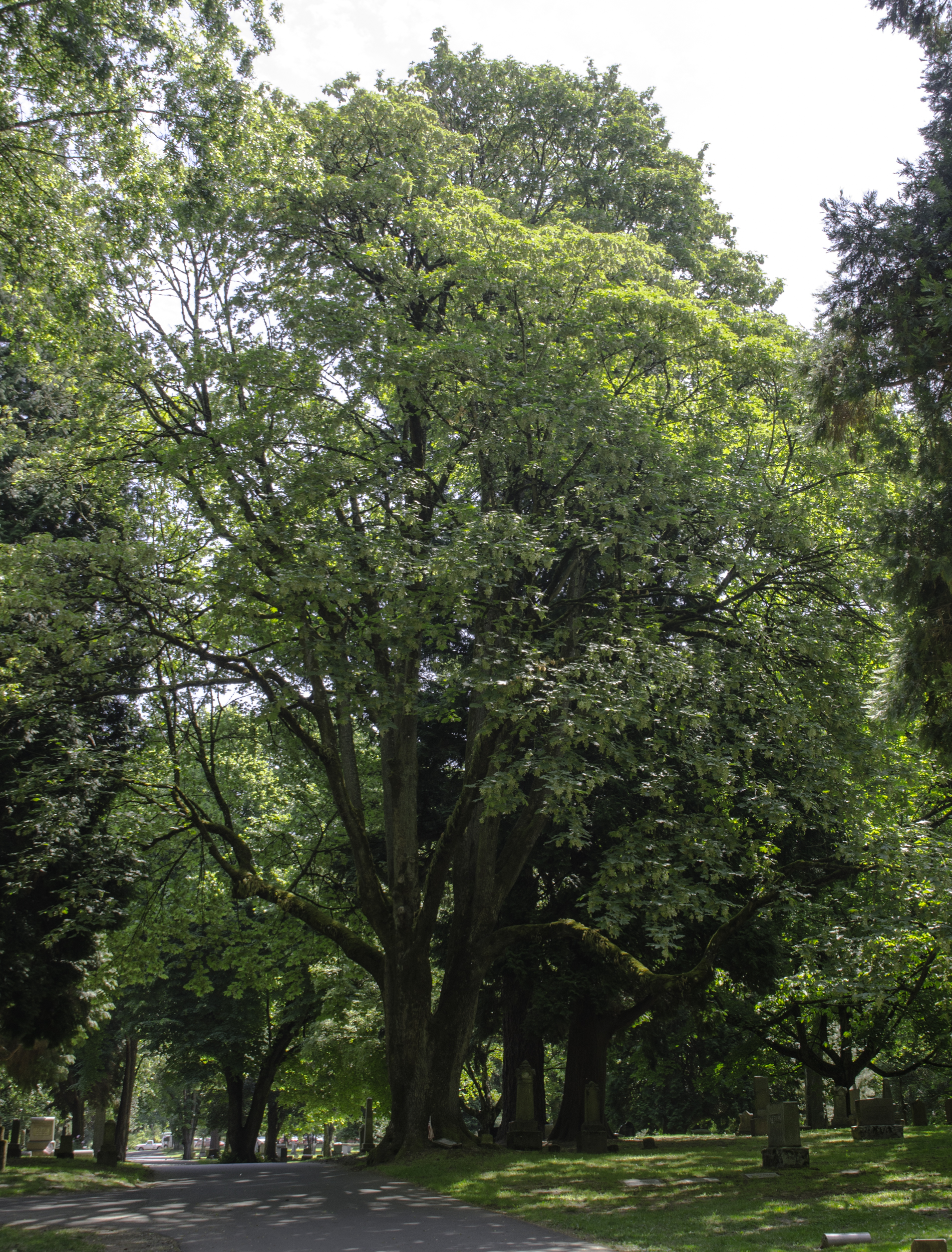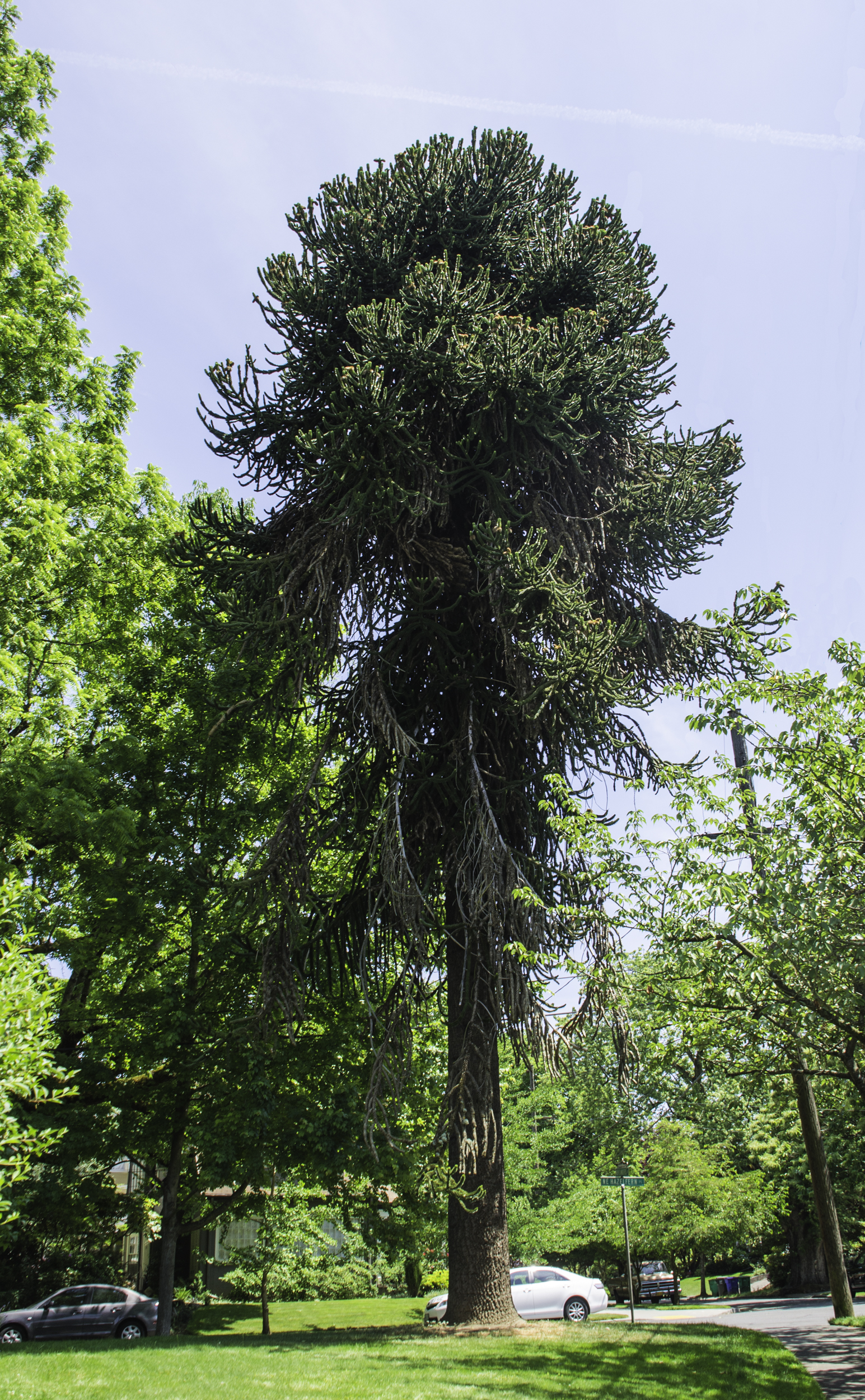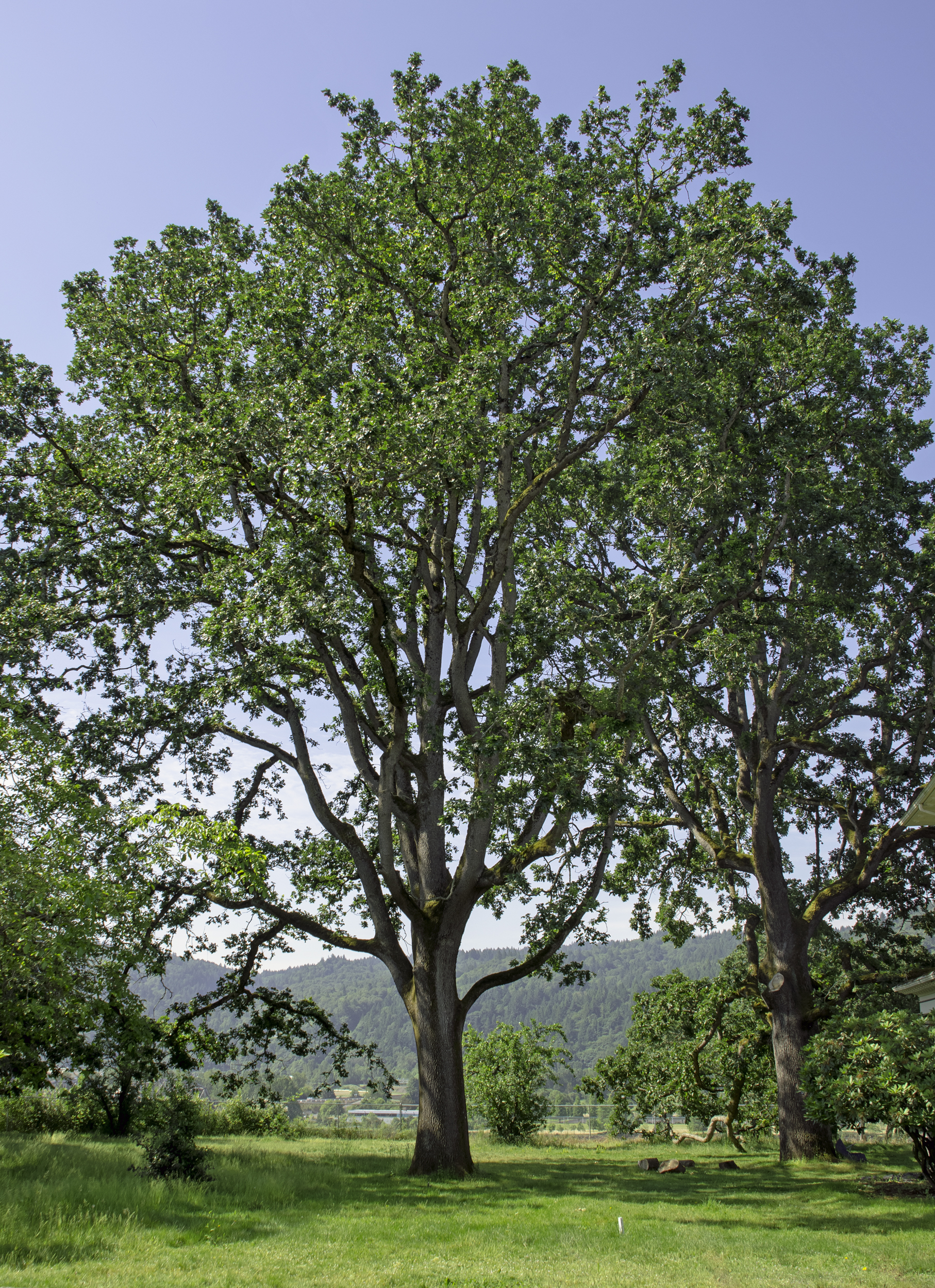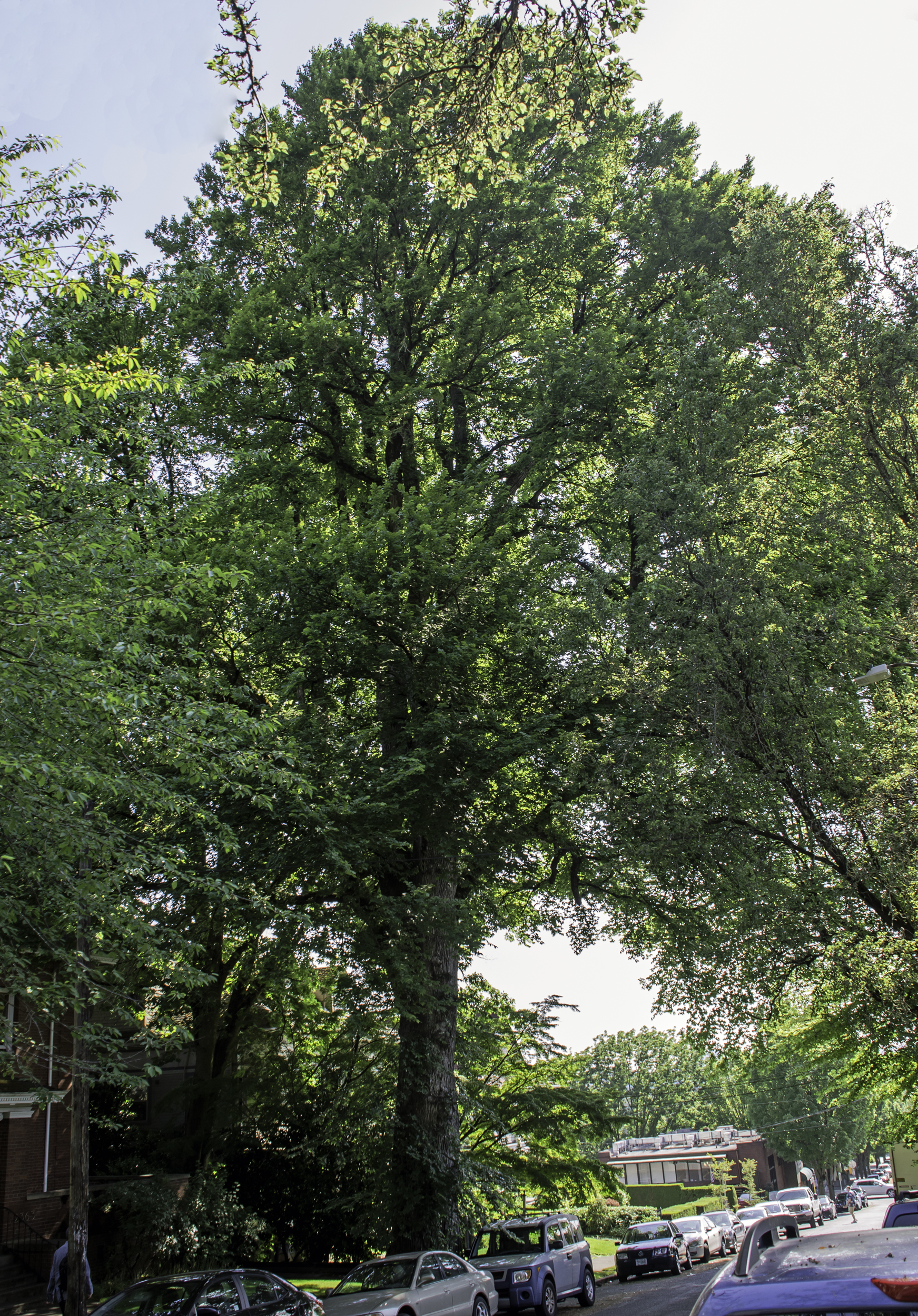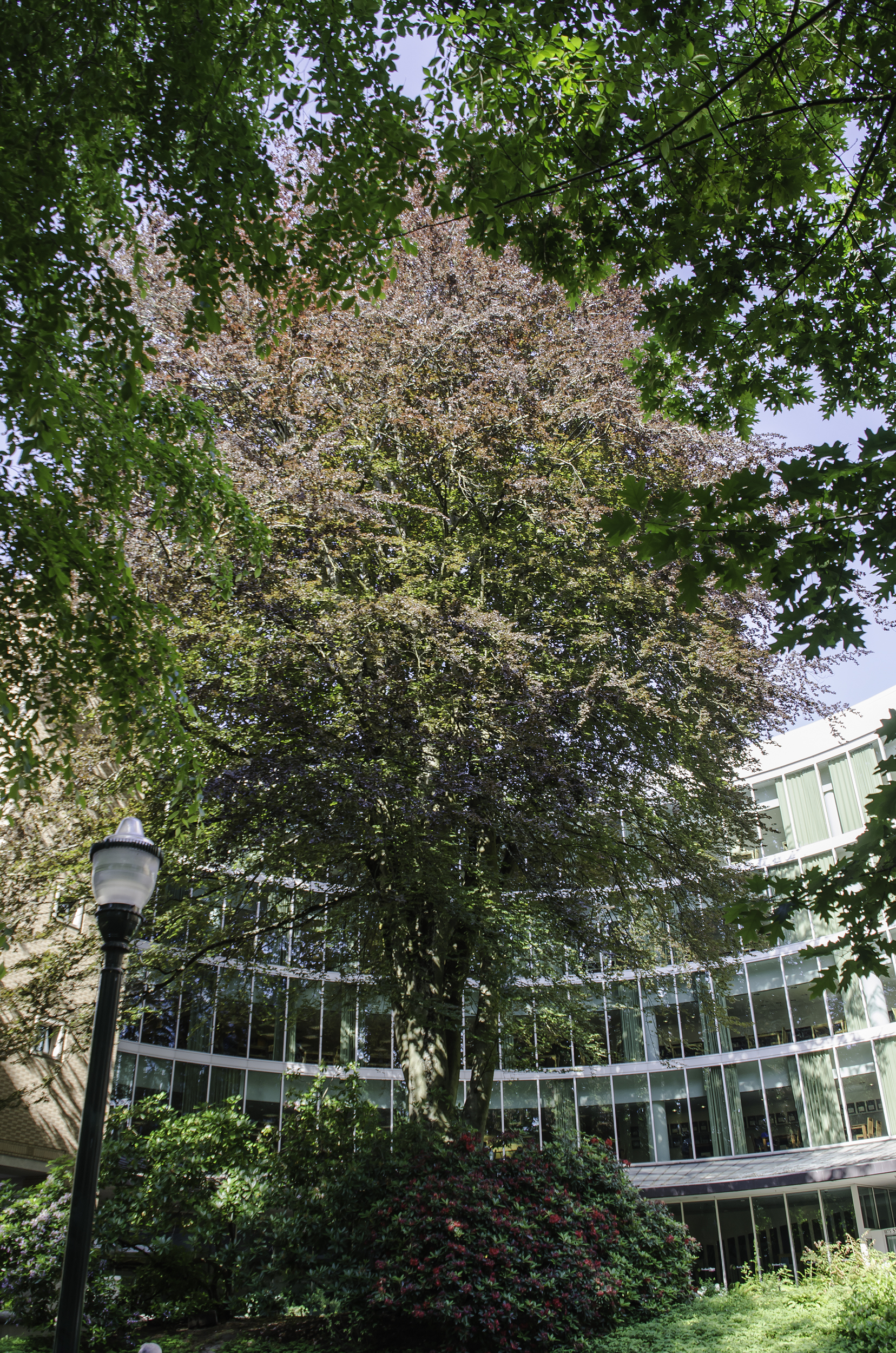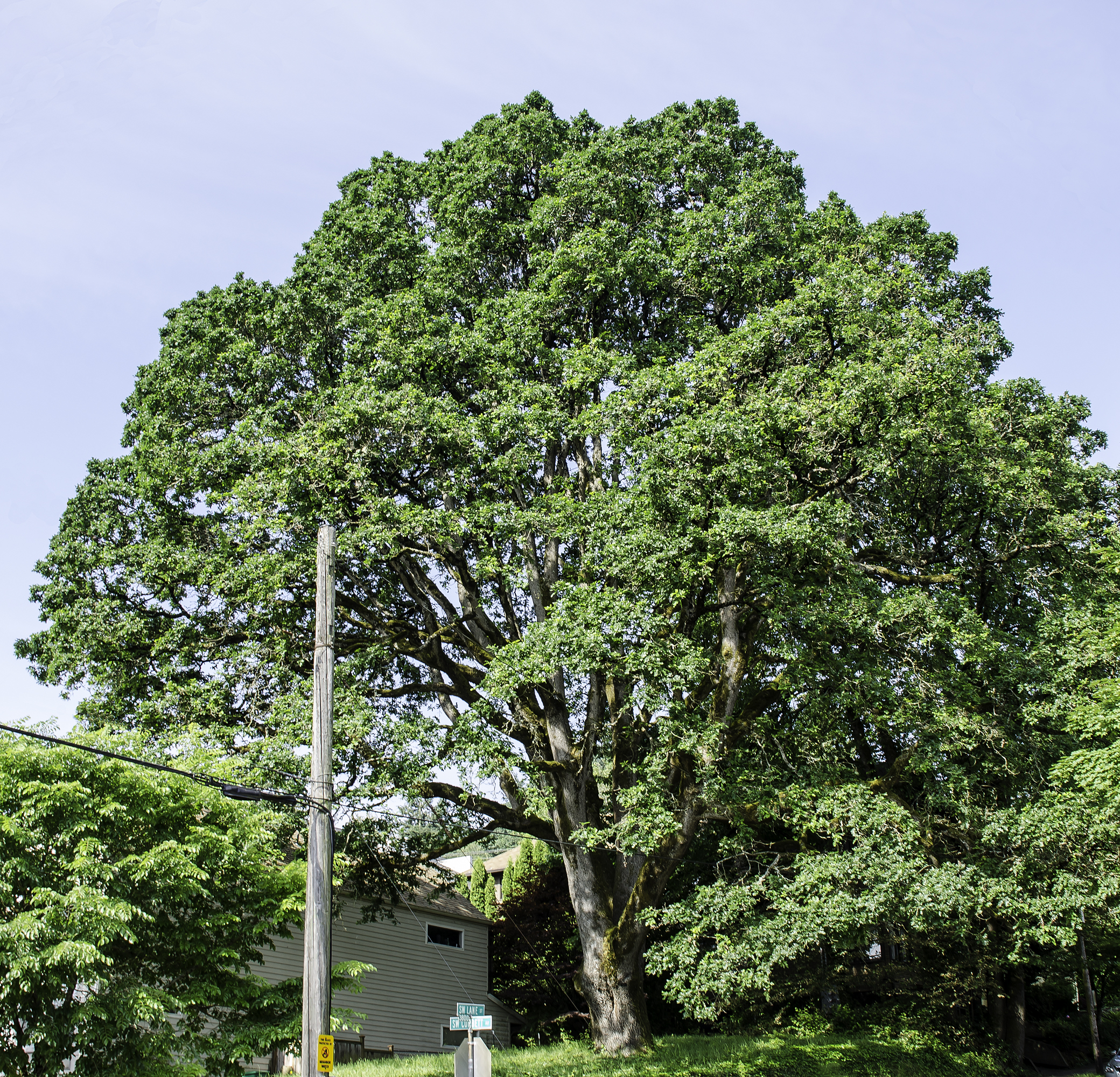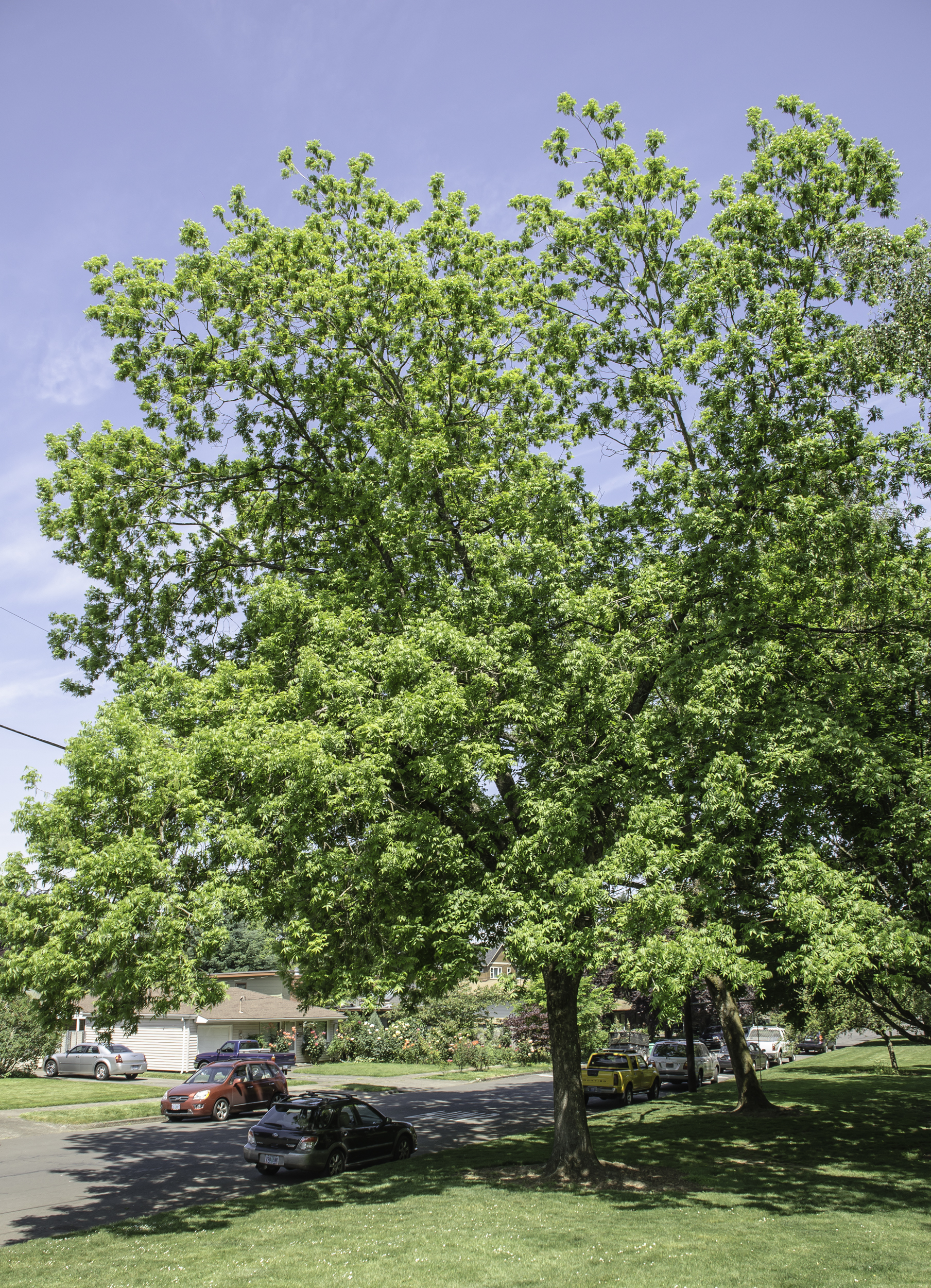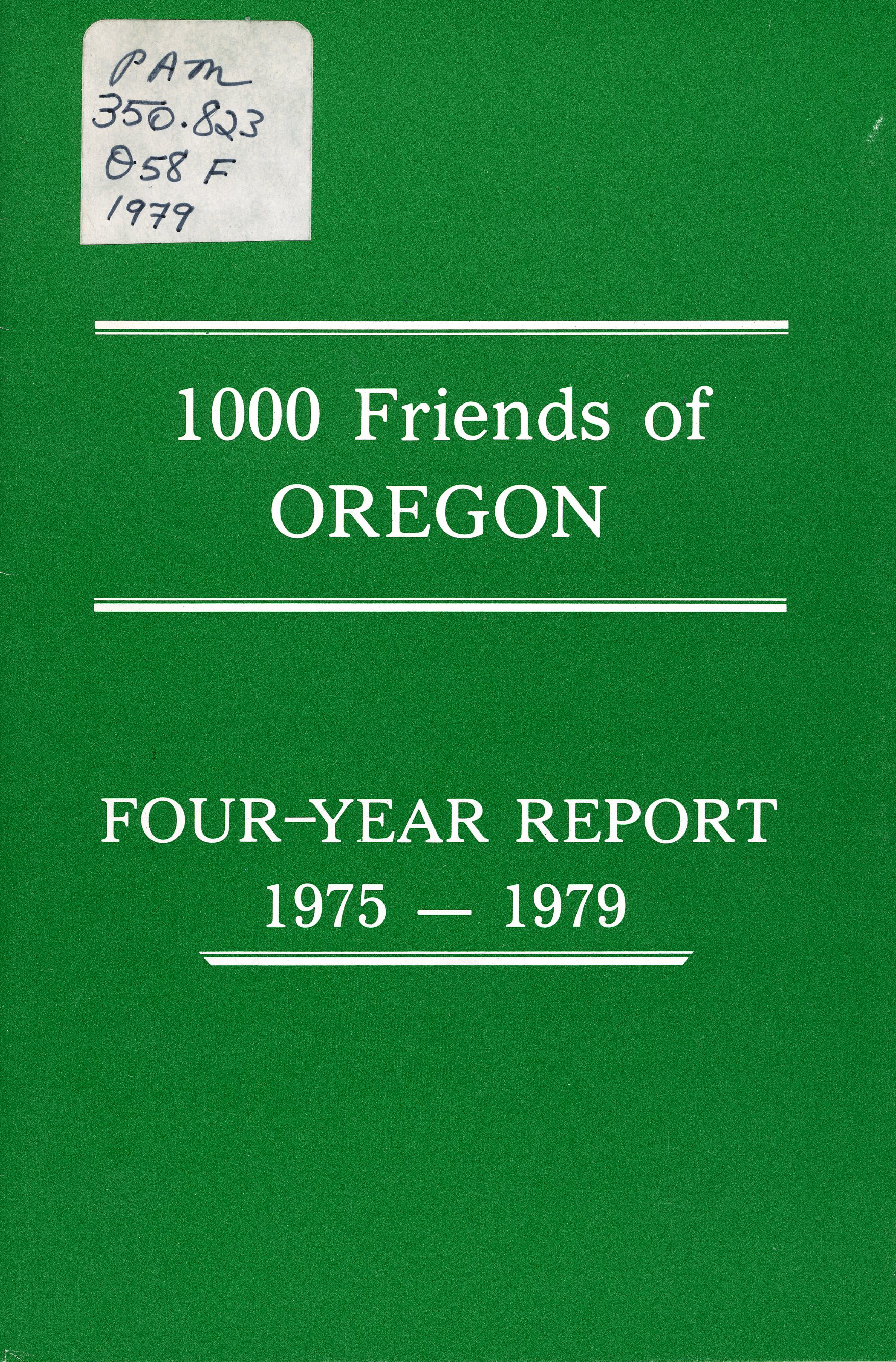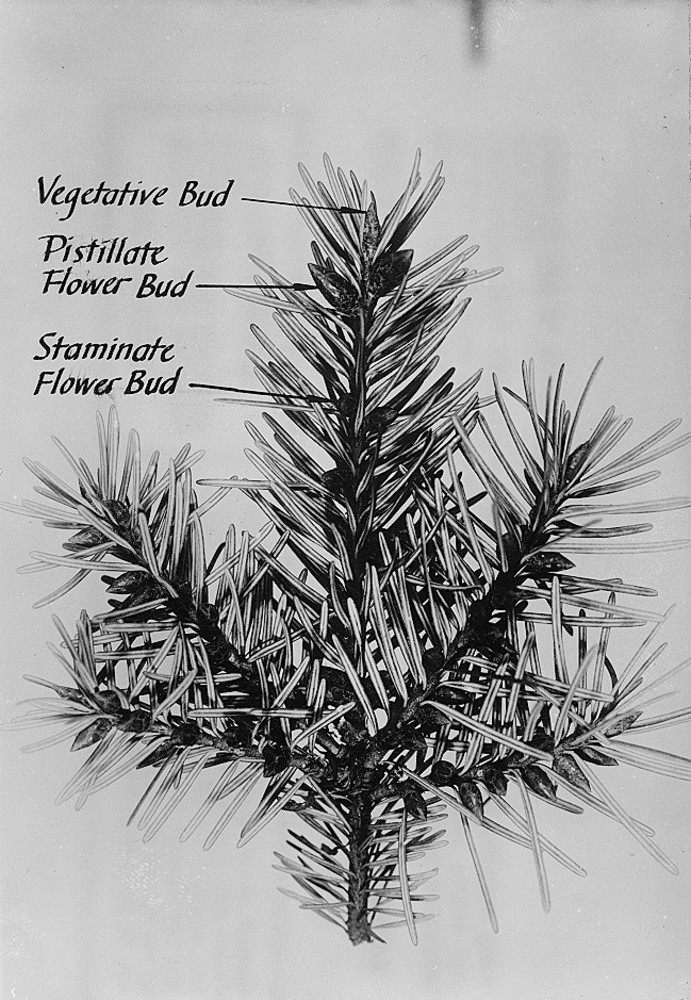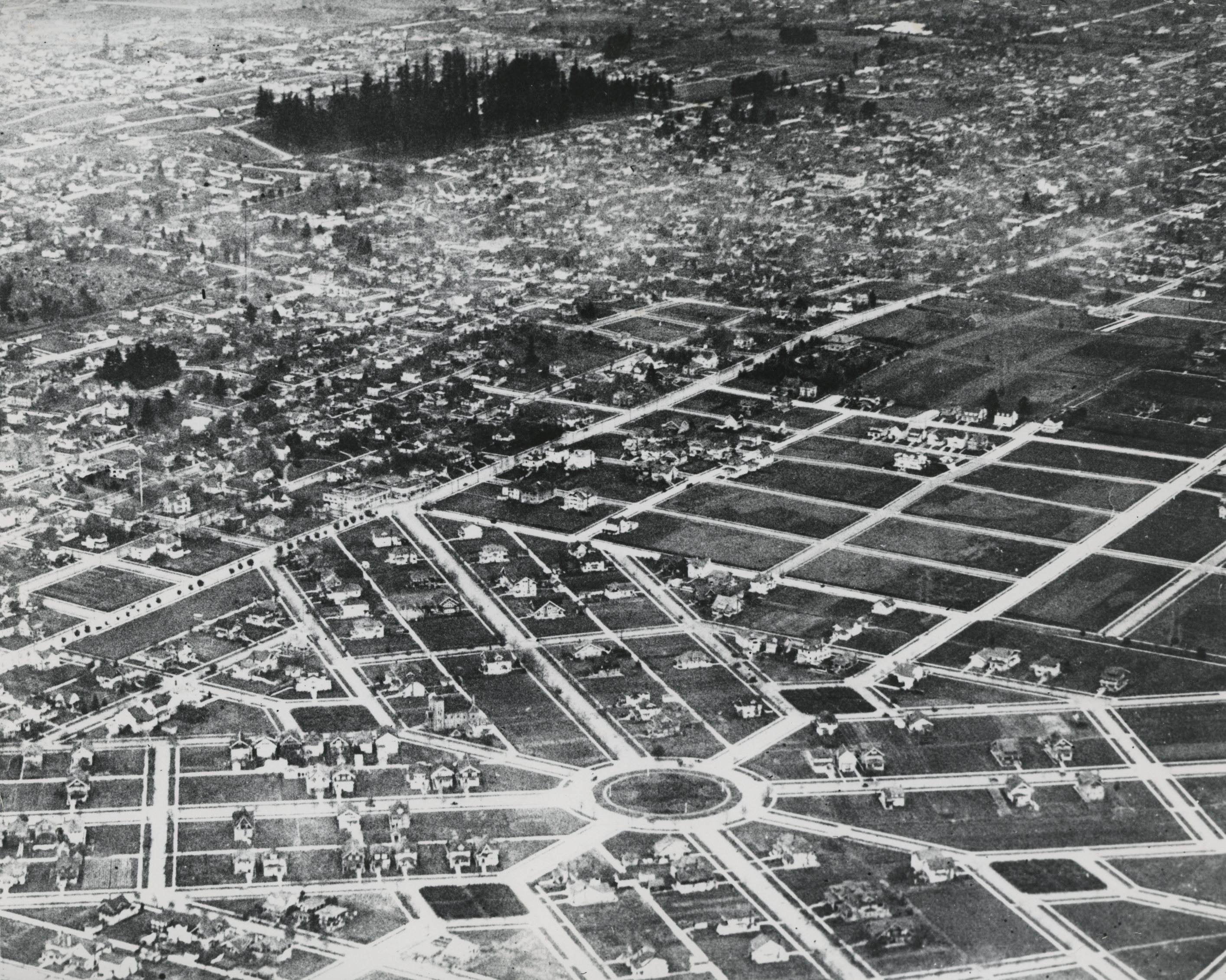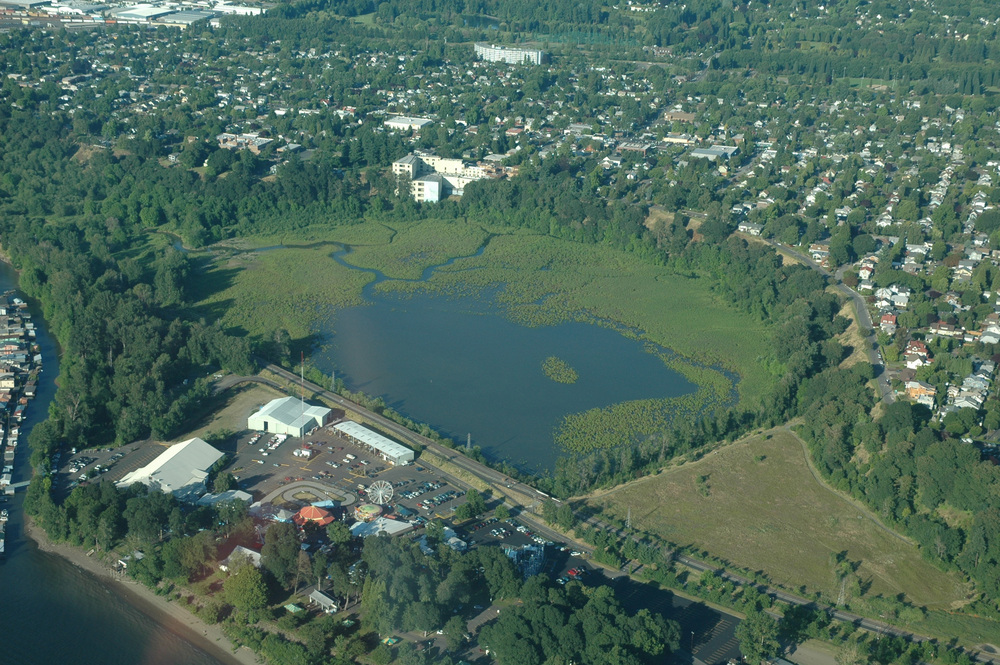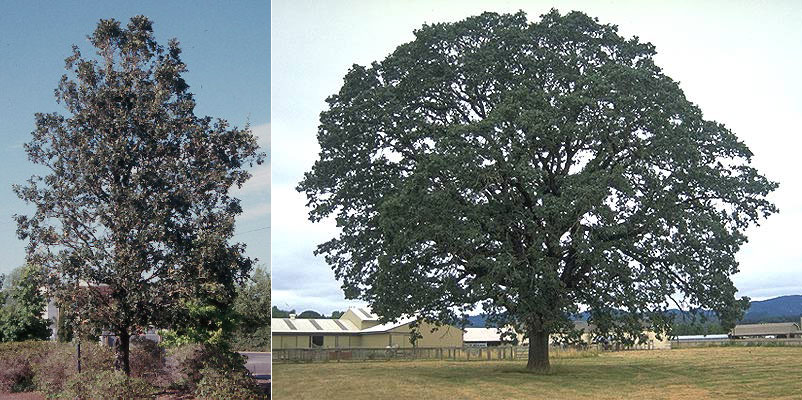The Heritage Tree program in Portland celebrates and protects trees that are considered significant to the city for their “age, size, type, historical association, or horticultural value.” With approximately three hundred trees designated as Heritage Trees, Portland has one of the most extensive tree landmarking programs in the country. Heritage Trees are nominated by residents, reviewed by a volunteer Heritage Tree Committee that is part of Portland Parks and Recreation’s Urban Forestry Commission, and confirmed by the City Council.
The earliest landmarking of Portland’s trees occurred in the 1970s under the guidance of the city’s Historic Landmarks Commission. These trees, which were designated just as the commission would have named architecturally or historically significant buildings, included an American elm (1973) and a London plane tree (1975), both in downtown Portland. When the Portland Historic Landmarks Commission and the Portland Planning Commission designated the Ladd's Addition neighborhood a Historic Conservation District in 1977, the street trees were included as contributions to the historic character of the neighborhood.
It became clear in 1988, however, that landmarking alone was not enough to protect the trees. That year a developer planned to cut down a three-hundred-year-old Oregon white oak in the Corbett neighborhood as part of a plan to build eight row houses. Neighbors rallied to protect the tree, chasing away workmen while draping the oak in chicken wire and tire chains. The tree was saved, and the Friends of the Oak group suggested that the newly formed Urban Forestry Commission consider an ordinance that protected the city’s significant trees.
While the preservation of what were called Historic Trees strengthened under the Landmarks Commission, allowing for four new designations in 1993, the Heritage Tree program really blossomed once it was placed under the control of the Urban Forestry Commission later that year, thanks to the pioneering work of poet and Urban Forestry Commissioner Jane Glazer, City Forester Alex Wynstra, and activists throughout Portland. Within two years of the ordinance passing, the number of protected trees soared to seventy-four. By 2000, over two hundred trees had been designated, and since then more than a hundred additional trees have been added to the list.
Approximately half of the Heritage Trees are on public property, such as in parks or public rights-of-way (including Hoyt Arboretum), and half are on private property. Any Portland resident can nominate a Heritage Tree, though trees on private property require the consent of the owner at the time of designation. The Heritage Tree Committee, acting on behalf of the Urban Forestry Commission, occasionally nominates trees, particularly in areas that have fewer Heritage Trees, such as East Portland.
In addition to the city ordinance, a statewide Oregon Heritage Tree program is administered by Oregon Travel Experience. The city ordinance provides enforcement should someone damage or cut down a Heritage Tree in Portland, while the state designation is largely honorary. Many cities and towns throughout Oregon, the nation, and even the world have Heritage Tree or Landmark Tree programs, not unlike Portland’s, though Portland’s is particularly robust due to the number of trees designated and the level of protection afforded to them.
Celebrating noteworthy trees in a city helps bring attention to the importance of the urban canopy and the community’s history that a tree has witnessed. As cities such as Portland change over time, Heritage Trees and other historic preservation programs help protect what the community and city cherish most.
-
![In Lone Fir Cemetery in honor of Joseph Lane, Oregon’s first territorial governor.]()
Bigleaf Maple tree (Heritage Tree #295).
In Lone Fir Cemetery in honor of Joseph Lane, Oregon’s first territorial governor. Courtesy Portland State University History Department
-
![This tree was likely distributed as a sapling at the 1905 Lewis & Clark Fair.]()
Monkey Puzzle Tree (Heritage Tree #236), 419 Hazelfern Pl..
This tree was likely distributed as a sapling at the 1905 Lewis & Clark Fair. Courtesy Portland State University History Department
-
![]()
Oregon White Oak (Heritage Tree #199), 7656 N Crawford.
Courtesy Portland State University History Department
-
![]()
English Elm (Portland Heritage Tree #36) near 2363 NW Flanders.
Courtesy Portland State University History Department
-
![Planted in the 1890s, it has witnessed the transformation of the Park Blocks.]()
European Copper Beach tree (Heritage Tree #54) in front of PSU's Millar Library.
Planted in the 1890s, it has witnessed the transformation of the Park Blocks. Courtesy Portland State University History Department
-
![This Oregon White Oak inspired changes in the protection of trees in Portland.]()
Corbett Oak tree (Heritage Tree #179), SW Lane and SW Corbett in Heritage Tree Park.
This Oregon White Oak inspired changes in the protection of trees in Portland. Courtesy Portland State University History Department
-
![In Woodstock Park, near SE 47th and Steele.]()
Pecan Trees (Heritage Trees #194 and #195) .
In Woodstock Park, near SE 47th and Steele. Courtesy Portland State University History Department
Related Entries
-
![1000 Friends of Oregon]()
1000 Friends of Oregon
1000 Friends of Oregon was founded in 1975 by Governor Tom McCall and a…
-
![Douglas-fir]()
Douglas-fir
Douglas-fir (Pseudotsuga menziesii), perhaps the most common tree in Or…
-
![Hiroshima Peace Trees]()
Hiroshima Peace Trees
From 2019 through 2022, thirty-four communities in Oregon planted a tot…
-
![Ladd's Addition]()
Ladd's Addition
Ladd's Addition is a streetcar-era neighborhood in southeast Portland w…
-
![Oaks Bottom]()
Oaks Bottom
Oaks Bottom, Portland’s first urban wildlife refuge, is located on the …
-
![Oregon white oak]()
Oregon white oak
Oregon white oak, Quercus garryana, grows along the Pacific Coast from …
Map This on the Oregon History WayFinder
The Oregon History Wayfinder is an interactive map that identifies significant places, people, and events in Oregon history.
Further Reading
Portland Parks and Recreation, Heritage Trees of Portland.
Portland City Charter, Code, and Policies.
Portland's History Told THrough Its Trees. Portland State University.
Reynolds, Phyllis C. and Elizabeth F. Dimon. Trees of Greater Portland. Portland, Ore.: Timber Press, 1993, 2013.

